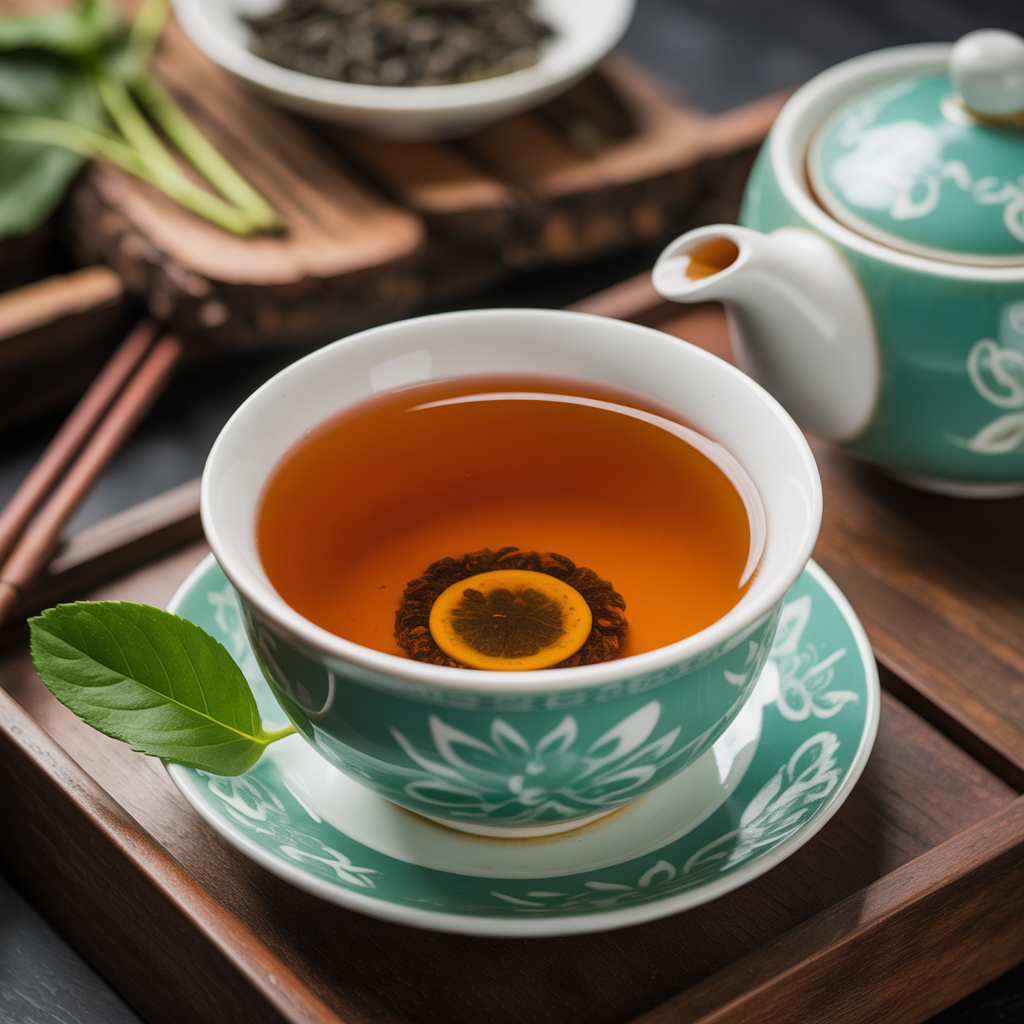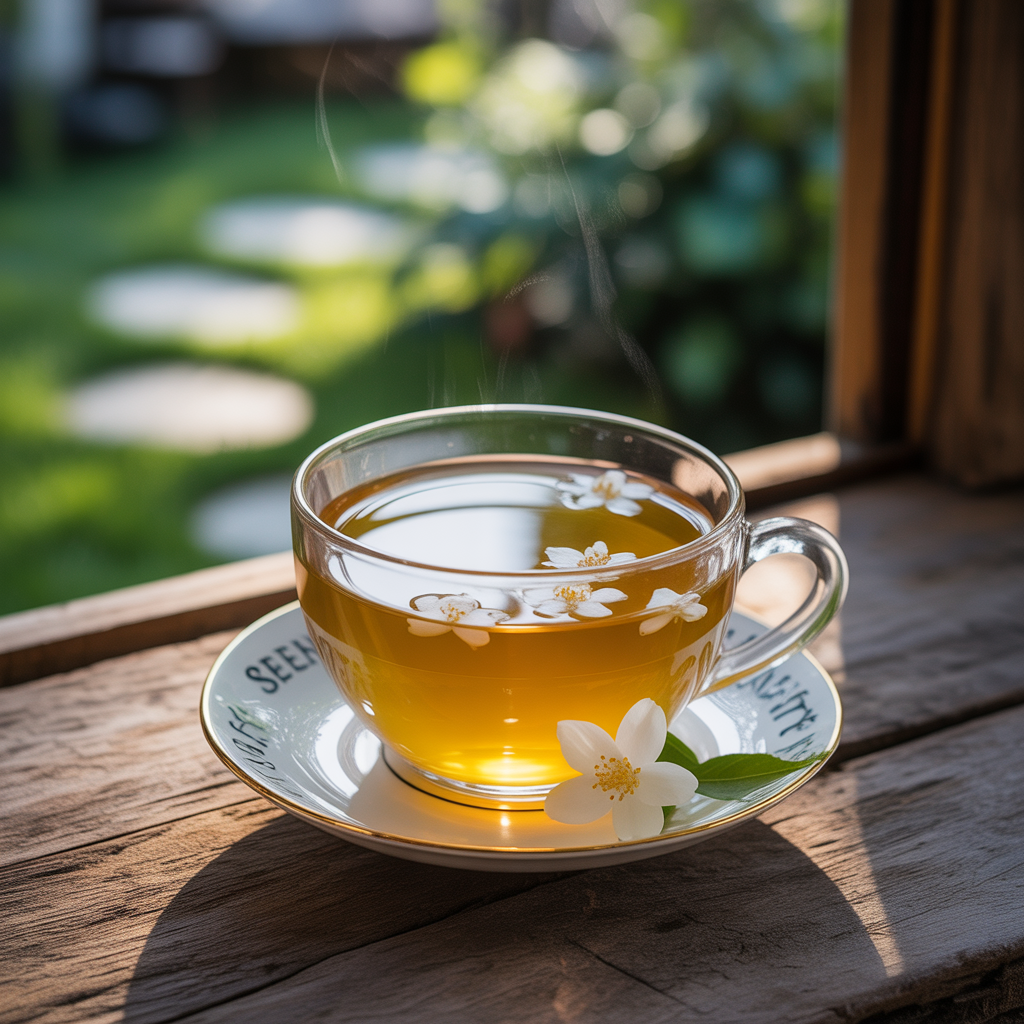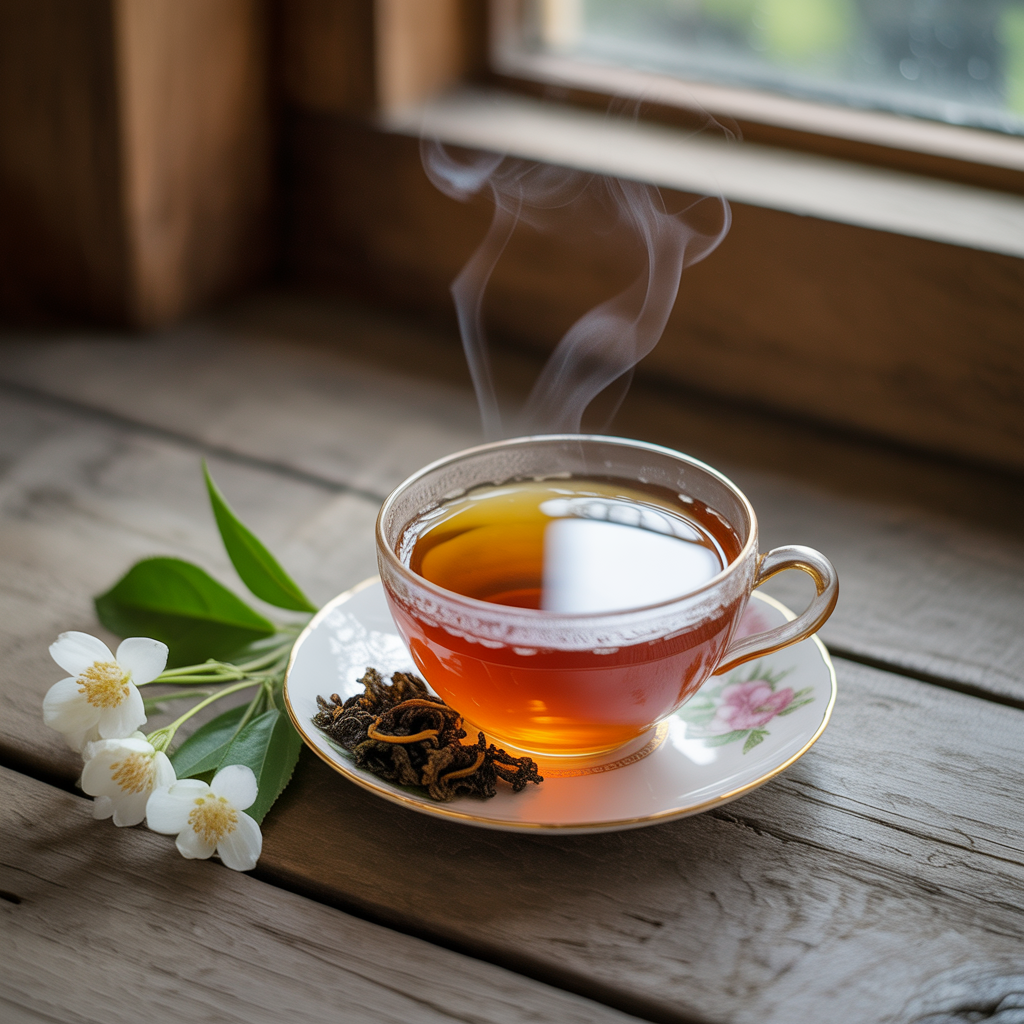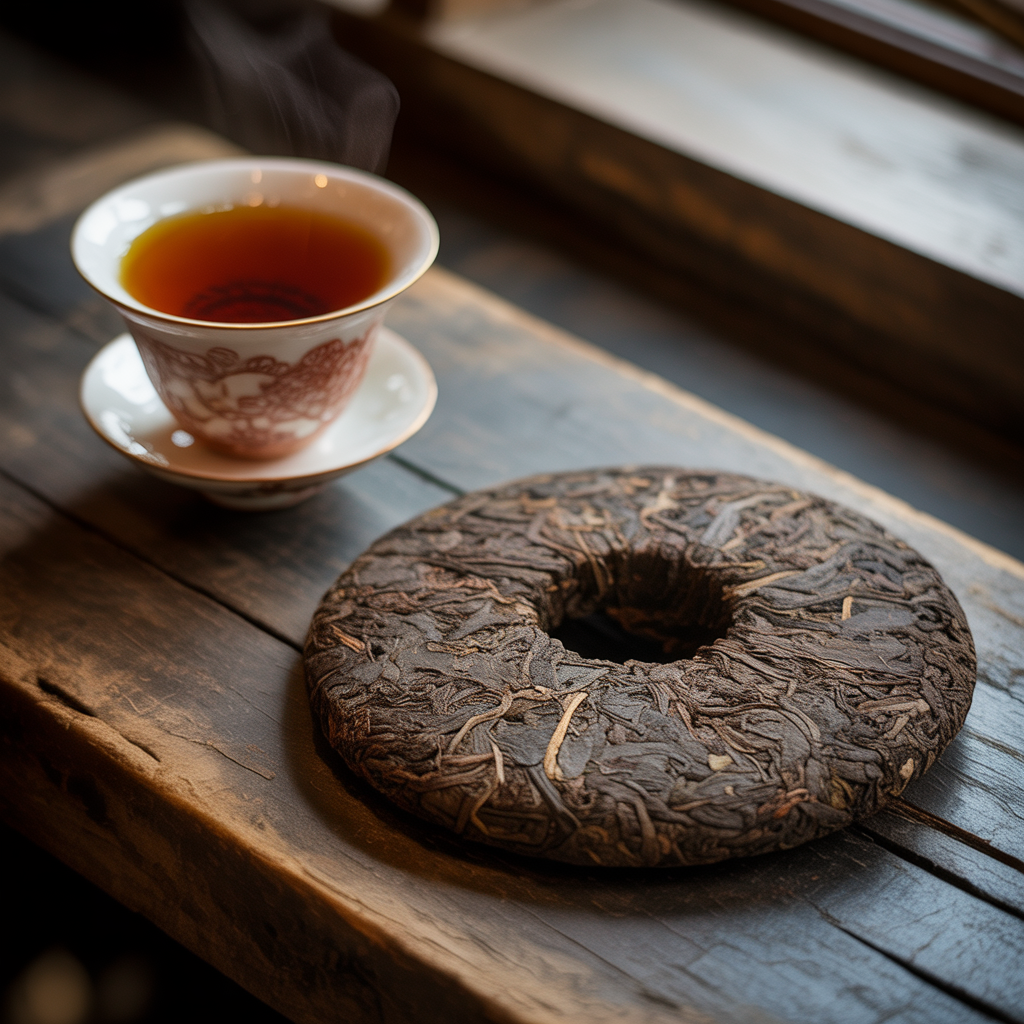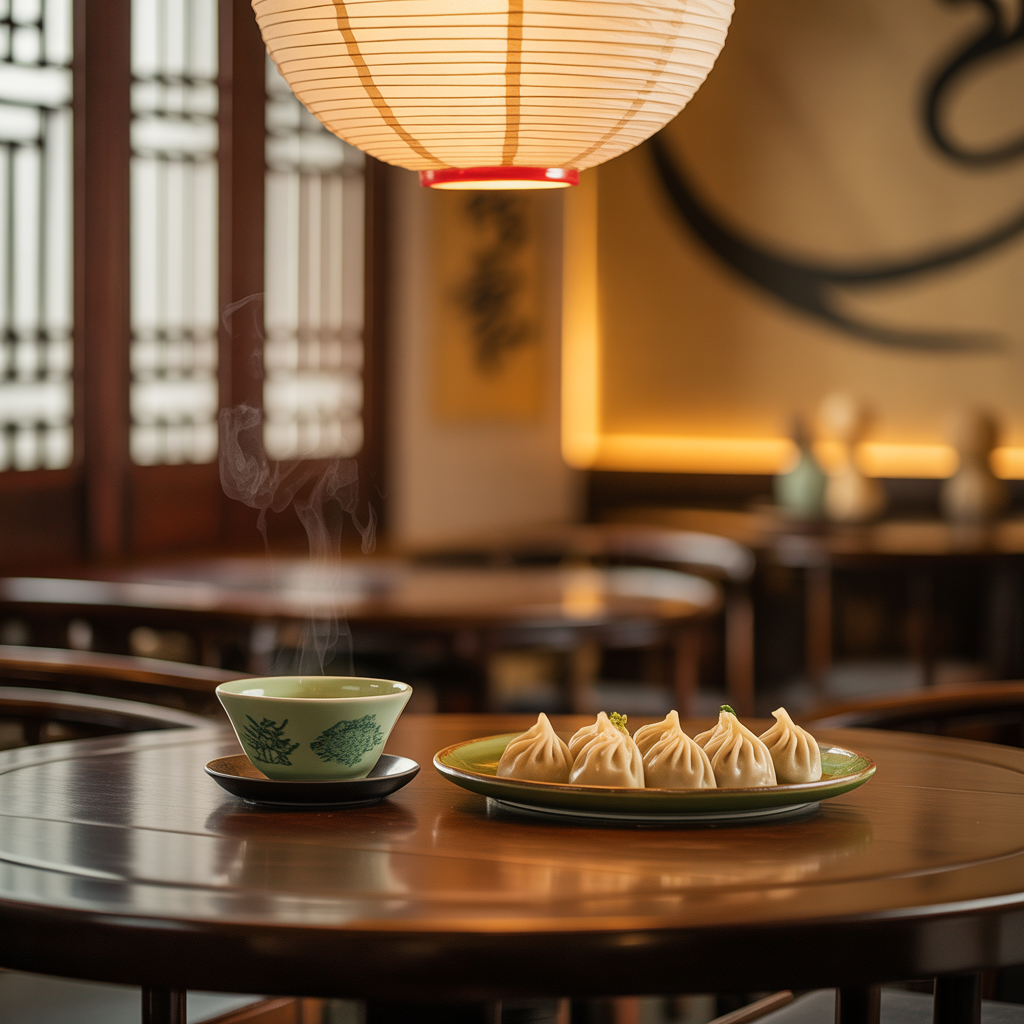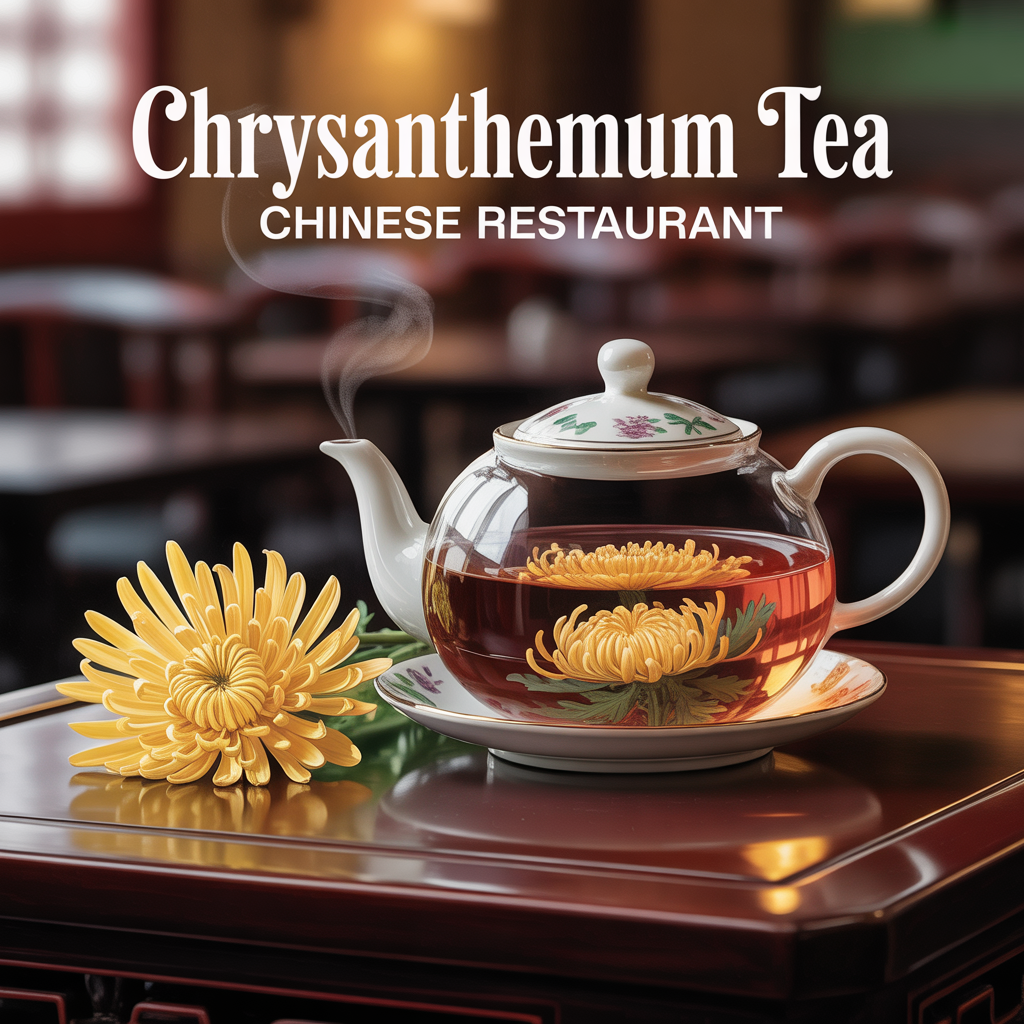What Is The Tea Used In Chinese Restaurants? 5 Authentic Varieties Revealed
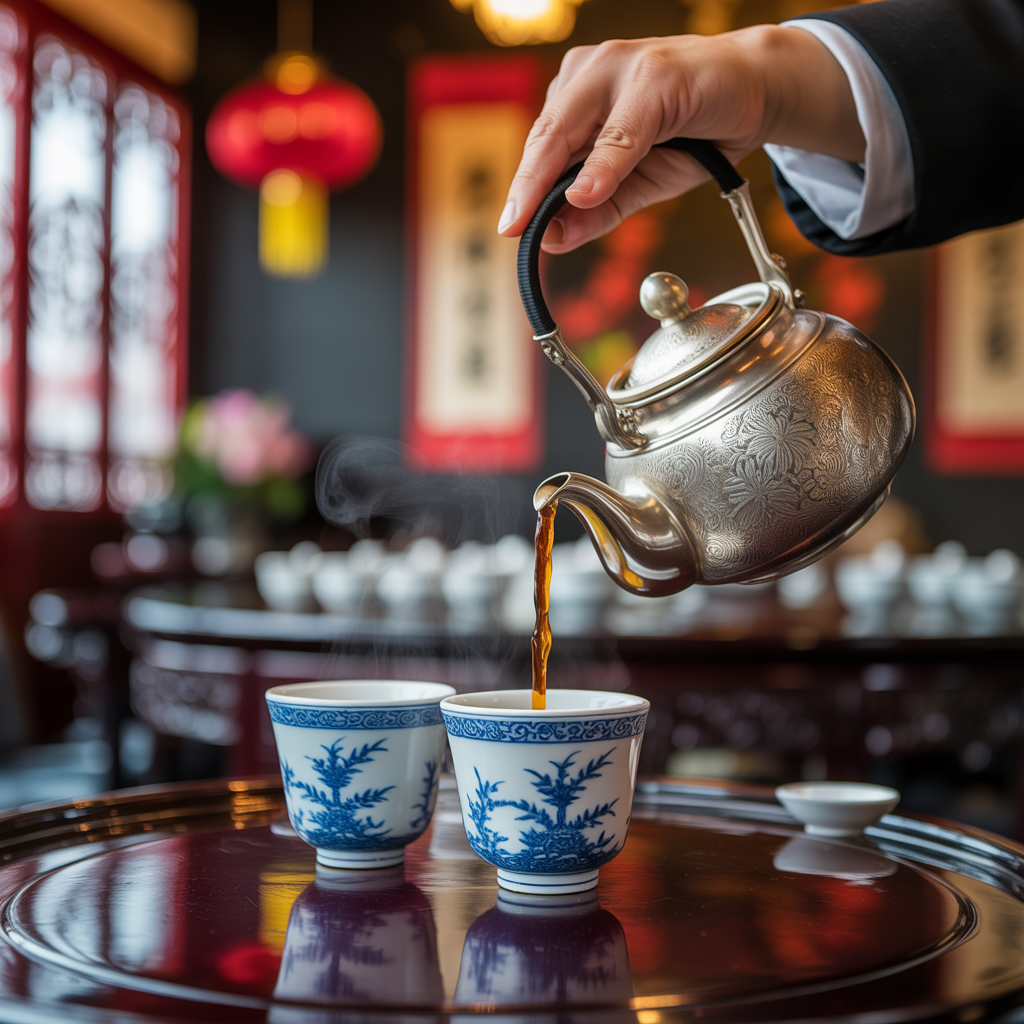
Ever wonder why that complimentary teapot at your favorite Chinese restaurant hits different than anything you brew at home?
I’ve spent years wondering about that mysteriously delicious tea that magically appears at my table whenever I sit down for Chinese food. If you’re anything like me, you’ve probably thought, “I need this in my life every day, not just when I’m demolishing dumplings.”
What Is The Tea Used In Chinese Restaurants? Why does it taste different?
Plot twist: There’s actually no single “Chinese restaurant tea.” That warm, comforting brew is one of several authentic varieties, each with its own personality and purpose. And yes, there’s a method to the madness of which tea gets paired with which regional cuisine.
I’ve done the detective work (tough job, but someone had to drink all that tea), consulted experts, and I’m about to spill the tea—literally—on what’s really in those little cups and how you can recreate that magic at home. Consider this your backstage pass to one of Chinese cuisine’s most misunderstood co-stars!
The 5 Most Common Teas Served in Chinese Restaurants (And Why They’re Not Random Choices)
Let’s be real—Chinese restaurants don’t just serve whatever tea was on sale at the local market. These selections are intentional, with centuries of tradition behind them. Here’s what you’re likely sipping:
1. Jasmine Tea: The Floral Charmer
What it actually is: Green tea that’s been allowed to party with fresh jasmine flowers until it absorbs their intoxicating scent.
Flavor profile: Like walking through a flower garden after a spring rain—light, sweet, and impossibly fragrant.
Where you’ll find it: That Cantonese place with the killer dim sum? Yep, that’s probably jasmine tea you’re enjoying.
Why it’s brilliant: Ever notice how jasmine tea seems to reset your taste buds between those rich, savory dim sum bites? That’s not an accident. The floral notes cut through fatty flavors like a hot knife through butter, preparing your palate for the next delicious morsel.
I once asked a dim sum chef in San Francisco why jasmine tea is so common with dim sum. His response? “The tea and the food grew up together—they’re childhood friends.” Poetic and accurate!
2. Oolong Tea: The Versatile Middle Child
What it actually is: The tea equivalent of being neither here nor there—partially oxidized leaves that fall between green and black tea.
Flavor profile: Depends on the specific oolong, but expect anything from “lightly floral with a buttery finish” to “toasty with hints of caramel.” It’s the chameleon of the tea world.
Where you’ll find it: Everywhere from hole-in-the-wall noodle shops to high-end Taiwanese restaurants.
Why it’s brilliant: Oolong is the Swiss Army knife of Chinese teas—it plays well with almost everything on the menu. Plus, its natural compounds help break down fatty foods, which is clutch when you’re face-deep in Peking duck.
According to research published in the Chinese Journal of Integrative Medicine, oolong tea can help increase energy expenditure and fat oxidation, making it an excellent companion for those hearty Chinese feasts we all love.
My friend’s Chinese grandmother swears oolong tea is the only acceptable tea to serve with a proper meal. “Green tea is for afternoons, black tea is for breakfast, but oolong is for food,” she insists. After 87 years of brewing wisdom, who am I to argue?
3. Pu-erh Tea: The Aged Digestive Wizard
What it actually is: Fermented tea that improves with age, like a fine wine or George Clooney.
Flavor profile: Earthy, smooth, and rich—like the forest floor after rain, but in a good way. Trust me on this one.
Where you’ll find it: That place where you always order too much and leave feeling like you need to be rolled home.
Why it’s brilliant: Pu-erh is basically nature’s Pepto-Bismol. It helps digest heavy, oily foods and is the perfect antidote to food coma. The fermentation creates probiotics that your stomach will thank you for later.
I was skeptical about pu-erh until a memorable meal in Chinatown where I ignored the tea and went all-in on crispy duck. My wise server kept refilling my cup with dark pu-erh, practically begging me to drink it. When I finally did, my imminent food coma lifted like magic. Lesson learned: the server knows best.
4. Green Tea: The Fresh-Faced Classic
What it is: Unoxidized tea leaves that keep their vibrant color and grassy personality intact.
Flavor profile: Clean, vegetal, and refreshing—like a lawn that tastes way better than it sounds.
Where you’ll find it: Restaurants specializing in lighter, more delicate cuisines, particularly in regions where green tea is the local pride.
Why it’s brilliant: Its clean, palate-cleansing properties make it perfect for seafood dishes. It’s like hitting the reset button between bites.
A chef in Hangzhou once told me, “We serve Longjing (Dragon Well) green tea because our local lake shrimp are subtle—other teas would be like playing heavy metal at a classical concert.” Food and tea pairing is serious business!
5. Chrysanthemum Tea: The Caffeine-Free Firefighter
What it is: Not technically “tea” at all, but dried chrysanthemum flowers steeped in hot water.
Flavor profile: Naturally sweet and floral with a cooling effect—like a gentle breeze on a hot day.
Where you’ll find it: Sichuan restaurants where the spice level ranges from “warm glow” to “is my face melting?”
Why it’s brilliant: Its cooling properties help tame the fire of spicy food. Plus, with no caffeine, you can enjoy it with dinner without worrying about staring at your ceiling at 2 AM.
I learned about chrysanthemum tea’s cooling powers the hard way after ignoring it during an ambitious Sichuan feast. Three glasses of water did nothing to help my burning mouth, but when I finally tried the neglected chrysanthemum tea, the relief was immediate. Sometimes traditional wisdom exists for a reason!
Why Chinese Restaurant Tea Tastes Better Than Your Sad Home Attempts
If you’ve tried and failed to recreate restaurant-quality tea at home, you’re not alone. Here’s why your kitchen experiments might be falling short:
They’re Using the Good Stuff
Most authentic Chinese restaurants use loose-leaf tea, not the dusty remnants found in most commercial tea bags. It’s like comparing fresh-ground coffee to instant—technically the same plant, worlds apart in experience.
My attempt to save money by using grocery store “jasmine tea” bags resulted in something that tasted more like hot water with vague floral aspirations. Lesson learned: some corners aren’t worth cutting.
They’re Not Afraid of Commitment
Chinese restaurants typically use more tea leaves per cup than Western brewing styles. While we timidly drop in a single tea bag, they’re going all-in with generous portions of loose leaves, creating a more robust flavor.
They Know Their Temperatures
Using boiling water for green or jasmine tea is like cooking a delicate fish at steak temperatures—you’re going to ruin it. Different teas need specific water temperatures:
- Green and jasmine teas: 175-185°F (hot but not bubbling)
- Oolongs: 195-205°F (small bubbles forming)
- Pu-erh and black teas: Near boiling (rolling bubbles)
I once watched in horror as my mother-in-law poured boiling water over expensive jasmine pearls I’d brought back from China. The resulting bitter brew taught us both a valuable lesson about temperature control.
The Power of Context
There’s also the “vacation effect”—things just taste better in their natural habitat. The ambient sounds of a busy restaurant, the anticipation of your favorite dishes, even the ritual of the tea service all enhance your perception of flavor.
This explains why the “authentic” tea I brought home from China never tasted quite the same in my kitchen as it did overlooking the misty mountains where it was grown. Context matters!
The Health Benefits You Never Knew You Were Drinking
That complimentary pot isn’t just delicious—it’s actually working overtime for your health while you feast. Here’s what’s happening behind the scenes:
Your Digestive System’s Best Friend
Ever wonder why Chinese meals rarely leave you with that “I need to unbutton my pants” feeling despite being just as indulgent as other cuisines? Thank your teacup.
Chinese teas—particularly oolong and pu-erh—contain compounds that help break down fatty foods and aid digestion. This isn’t new-age wellness talk; it’s centuries of practical wisdom backed by modern science. A study published in Nutrients found that tea polyphenols positively influence gut bacteria, potentially explaining why tea and dumplings are such a happy partnership.
My uncle, who normally pops antacids like candy after big meals, was shocked when he finished a massive Chinese banquet without reaching for his medicine. The pu-erh tea he’d been sipping throughout dinner had quietly been doing the heavy lifting for his digestive system.
Fighting Free Radicals While You Feast
All true teas contain catechins and other antioxidants that combat free radicals—those troublemaking molecules that contribute to aging and disease. It’s like having a tiny health insurance policy with each sip.
If you’re interested in other traditional Chinese health practices with surprising benefits, check out our article on the Top 10 Benefits of Acupuncture: What Science Actually Reveals. Many of these ancient wellness approaches are finally getting the scientific validation they deserve.
Metabolism Magic
The combination of caffeine and catechins in tea, especially oolong, might temporarily boost your metabolism. I’m not suggesting tea will melt away pounds while you indulge in General Tso’s chicken, but hey, every little bit helps, right?
Speaking of health breakthroughs, our recent article on a breakthrough blood pressure drug shows how modern medicine is tackling hypertension—something tea can help with too, though more modestly.
The Calm-Alert Paradox
Ever notice how tea makes you feel simultaneously relaxed yet mentally sharp? That’s the L-theanine talking—an amino acid found in tea that promotes relaxation without drowsiness. It’s the perfect state for enjoying a meal with good company.
After switching from coffee to tea with my lunch, I noticed I no longer experienced that 3 PM energy crash. Instead, I remained focused yet calm throughout the afternoon—a benefit I never expected from my Chinese restaurant habit.
Regional Tea Traditions: It’s Complicated (In a Good Way)
Chinese cuisine isn’t monolithic, and neither are its tea traditions. Here’s a crash course in regional tea preferences:
Cantonese (Southern China)
Go-to teas: Jasmine, oolong, pu-erh
The logic: The delicate jasmine complements dim sum, while pu-erh helps digest those BBQ pork buns you couldn’t resist ordering seconds of.
Sichuan (Western China)
Go-to teas: Chrysanthemum, green tea
The logic: When your mouth is on fire from chili oil, cooling chrysanthemum tea is less “optional beverage” and more “essential fire extinguisher.”
Jiangsu/Zhejiang (Eastern China)
Go-to teas: Local green teas like Dragon Well (Longjing)
The logic: These regions produce some of China’s finest green teas, and they’re not shy about showing them off. The light, fresh flavors complement the area’s refined, slightly sweet cuisine.
Northern China
Go-to teas: Stronger black teas, robust oolongs
The logic: Heartier teas stand up to the wheat-based, more substantial northern dishes. When you’re eating hand-pulled noodles and meat-filled buns, you need a tea with enough personality to be noticed.
China’s regional diversity extends beyond cuisine and tea—it’s also making waves globally in other sectors. Our article on Chinese renewable investments in Africa explores how China is shifting its international strategy toward sustainable energy projects.
Brew Like a Pro: Bringing Restaurant-Quality Tea Home
Ready to elevate your home tea game from “sad tea bag in a mug” to “where has this been all my life”? Here’s your game plan:
The Shopping List
- Loose-leaf tea: Start with jasmine or a medium oolong—they’re the most versatile and forgiving for beginners
- Basic equipment: A small teapot with a strainer (nothing fancy required)
- Quality water: Filtered is best; tap water with chlorine notes will ruin even the finest tea
The Foolproof Method
- Measure generously: Use 1-1.5 teaspoons of tea per 6-8 ounces of water—slightly more than you think you need
- Mind your temperature:
- For jasmine/green tea: Let boiling water cool for about 2 minutes (175-185°F)
- For oolong: Let cool for just 30 seconds to 1 minute (195-205°F)
- For pu-erh/black tea: Use water just off the boil
- Try the “rinse” trick: Pour hot water over the leaves, swirl for 5 seconds, then discard this water. This “awakens” the leaves and removes any dust. It’s the difference between a good cup and a great one.
- Time it right:
- Jasmine/Green tea: 2-3 minutes (longer = bitter)
- Oolong tea: 3-5 minutes
- Pu-erh tea: Start with just 30 seconds to 1 minute for the first infusion
- Go for round two (and three): Most quality Chinese teas can be steeped multiple times. Each infusion reveals different notes—like getting several different teas for the price of one!
My first attempt at brewing oolong at home was a bitter disaster. After consulting with a tea shop owner, I discovered I was using water that was too hot and steeping for too long. With those simple adjustments, the same leaves produced a completely different—and delicious—result.
Developing good tea brewing habits is similar to building any other skill. For more on establishing beneficial routines, check out our guide to the habits of successful beginner musicians—many of the same principles apply to mastering the art of tea.
The Lazy Person’s Shortcut
For a taste reminiscent of many Chinese restaurant teas without buying multiple varieties, try this simple blend: mix 2 parts medium-bodied oolong with 1 part jasmine green tea. It creates a balanced profile that works with almost any Chinese dish you’re making at home.
Tea Etiquette: Small Gestures That Speak Volumes
Understanding a few tea customs can transform your experience from merely drinking tea to participating in a cultural tradition:
The Secret Finger Tap
Next time you’re at a Chinese restaurant, watch what happens when someone pours tea for others. You might notice people tapping two or three fingers on the table as a gesture of thanks.
This tradition reportedly dates back to the Qing Dynasty when Emperor Qianlong traveled incognito and served tea to his companions. Since bowing to the emperor would have blown his cover, they tapped fingers on the table to symbolize a bow. Today, it remains a subtle way to say “thank you” without interrupting conversation.
I embarrassed myself at a business dinner by asking why everyone was drumming their fingers after being served tea. My Chinese colleague later gently explained this tradition—a cultural nuance I now appreciate and practice.
The Teapot Signal
In traditional settings, leaving the teapot lid slightly ajar signals that you’d like more hot water. A fully closed lid indicates you’re finished. It’s like a secret language spoken through teapot positioning!
The Hospitality Hierarchy
It’s customary to serve others before yourself, filling cups about 70% full. A completely full cup can be seen as overwhelming or leaving no room for growth—a subtle philosophical touch to a simple act.
For more fascinating cultural insights, Harvard Health has an excellent article on how different cultures use tea for both hospitality and health benefits.
Beyond the Restaurant: Diving Deeper Into Tea Culture
While restaurant teas offer a wonderful introduction, they’re just the tip of the iceberg in China’s rich tea traditions. It’s like saying you understand Italian food because you’ve had pizza—there’s so much more to explore!
For those whose curiosity has been piqued, consider visiting a dedicated Chinese tea shop where you can experience a traditional Gongfu tea ceremony. This meditative practice focuses on bringing out the full character of premium teas through precise brewing methods.
My first Gongfu ceremony lasted nearly two hours to properly taste just three teas. The experience transformed my understanding from “tea as a beverage” to “tea as an art form”—complete with specialized tools, precise techniques, and a vocabulary as complex as wine tasting.
Speaking of fascinating Chinese phenomena, did you catch our article about the white streak phenomenon that lit up US skies from a Chinese rocket fuel dump? China continues to make headlines in unexpected ways.
The Truth About Those “Chinese Restaurant Tea” Packages
You’ve probably seen those boxes labeled “Chinese Restaurant Tea” in grocery stores. While convenient, they’re typically blends designed to mimic the general flavor profile found in many restaurants—the tea equivalent of a greatest hits compilation rather than the original albums.
These blends often combine oolong, jasmine, and sometimes green tea to create a one-size-fits-all solution. They’ll do in a pinch, but they generally can’t match the quality or complexity of the individual teas served in authentic establishments.
I bought one of these blends hoping for an authentic experience and was disappointed by its flat, generic flavor. When I later compared it side-by-side with loose-leaf jasmine and oolong from a specialty shop, the difference was night and day—like comparing a frozen pizza to the real thing from Naples.
Conclusion: A Simple Cup With a Complex Story
That humble pot of tea at your Chinese restaurant table isn’t just an afterthought—it’s a carefully selected companion to your meal, backed by thousands of years of cultural wisdom and practical benefits.
The next time that teapot arrives at your table, take a moment to appreciate the aromatic steam rising from your cup. Maybe ask your server about the specific variety—you might be surprised by the thoughtful selection and the story behind it.
Whether you’re enjoying jasmine’s floral embrace with delicate dim sum or pu-erh’s earthy comfort after a feast of Peking duck, you’re participating in a tradition that transforms a simple leaf into an essential element of one of the world’s great culinary experiences.
And if you decide to bring that experience home? Well, now you know exactly what’s in that pot and how to brew it like a pro. Your taste buds—and your dinner guests—will thank you.
For more in-depth information on the health benefits of different tea varieties, the Journal of Food Science regularly publishes fascinating research on tea’s bioactive compounds and their effects on human health.
FAQs About Chinese Restaurant Tea
Is there a single type of “Chinese restaurant tea”?
Nope! That’s like asking if there’s a single type of “Chinese food.” Restaurants serve various authentic teas including jasmine, oolong, pu-erh, green, and chrysanthemum, often selected to complement their specific regional cuisine.
Why is tea served free in Chinese restaurants?
It’s a traditional gesture of hospitality—like bread at an Italian restaurant or chips at a Mexican spot. It also serves practical purposes: cleansing your palate, aiding digestion, and giving you something to sip while deciding between the potstickers or spring rolls (always get both, by the way).
Does Chinese restaurant tea contain caffeine?
Most do. Jasmine, oolong, pu-erh, and green teas all contain caffeine, though less than coffee. If you’re avoiding caffeine, chrysanthemum tea is your caffeine-free friend.
How do I ask for a specific type of tea at a Chinese restaurant?
Just ask! Most restaurants are happy to tell you what they serve and may offer alternatives. A simple “What kind of tea do you serve?” or “Do you have oolong or jasmine tea?” works perfectly.
Can I get refills of hot water for my teapot?
Absolutely! Most Chinese restaurants will happily refill your teapot throughout your meal. Just leave the lid ajar or signal your server. The leaves can typically be steeped multiple times, with each infusion offering slightly different flavor notes.
What’s the proper way to show appreciation when someone pours tea for me?
In traditional settings, lightly tap two or three fingers on the table as a gesture of thanks. It’s a subtle custom that originated during the Qing Dynasty and remains a respectful acknowledgment today.
Have you discovered a favorite tea at your local Chinese restaurant? Share your experience in the comments below!
This article was last updated on May 25, 2025

